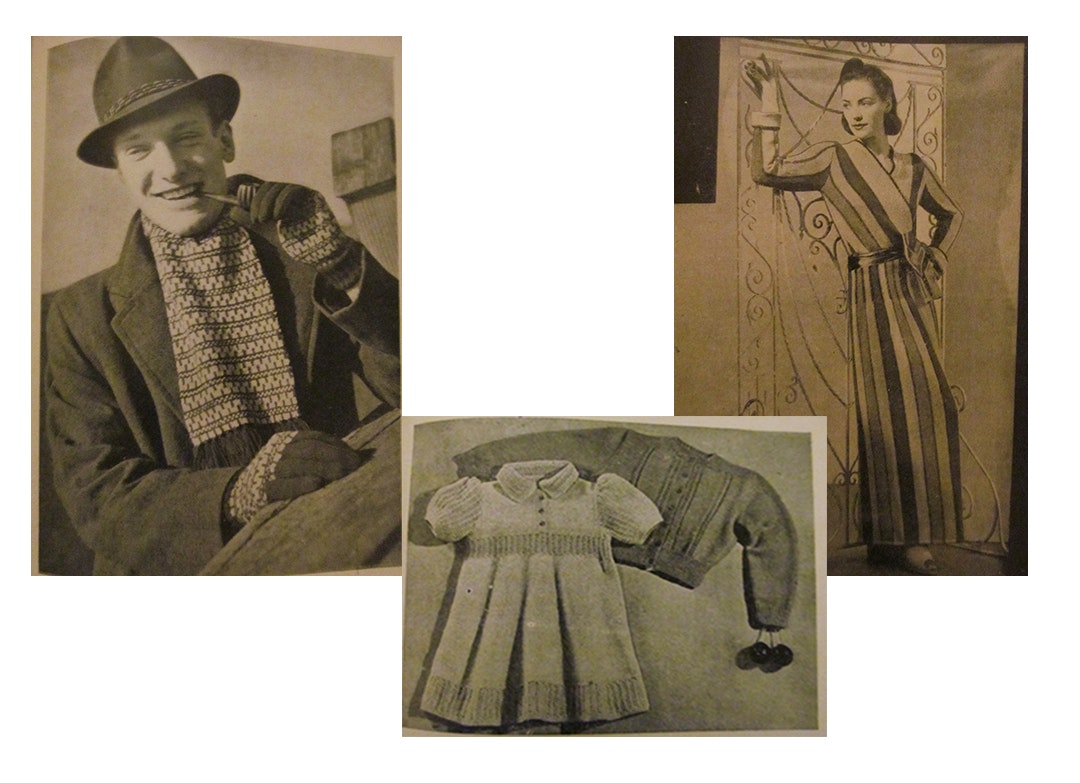I have some World War II-era knitting books, which originally belonged to my great-grandmother. They tell a story of the “make do and mend” mentality that defined Britain during a time of rationing and hardship. During the war, and shortly thereafter, clothing was rationed, which was caused by shortages of materials, including the wool needed to make army uniforms and silk used for parachutes. Clothes were made to be worn again and again, so it was worth it to make sure garments were well made and that the wearer liked them.
“Remember that you don’t only have to like your new frock these days, you have to live in it.” (Knitted Garments for All, 1944)
During the war, knitting was an important skill for women and a way to provide for their families. Knitting books from this time period encouraged using one’s time and resources wisely by buying the best materials one could afford. Quality yarns and needles would last and could be reused. Knitters were encouraged to make up their garments properly and “waste not, want not” by using and reusing what they had.

Left to right: a Fair Isle scarf and gloves, from Modern Knitting Illustrated (1945); a frock and cardigan for a small child, from Knitted Garments for All (1944); and a housecoat designed in five colors, from Knitting For All Illustrated (1941). These garments illustrate the creative knitting of the 1940s and that, even though wool was scarce, the knitted items made during the war could still be attractive as well as practical. Collection of the author.
All the books encouraged “using up every scrap of wool.” (Knitted Garments for All, 1944)
The books provided practical tips for using up spare wool and projects for remnants, including Fair Isle garments and accessories, clothes and accessories for children, and home décor projects, such as rugs. Three fun projects that caught my eye include a kicking bag for a baby, made from knitted squares, and a tea cozy and cushion, using odd lengths of wool. I found the ingenuity and resourcefulness in the books inspiring.
Not only was wool “scarce and precious now,” but, of course, there was no central heating. (Knitting for All Illustrated, 1941)
My great-grandmother lived in the North East of England where it was very cold, so making warm clothes would have been important to her and her friends. Knitted garments and accessories were invaluable for warmth, and a woman’s ability to knit and make clothing for her family during the war must have been a great contribution to their survival and comfort. All of the knitting books include patterns for thin, handknitted underwear, usually a vest and shorts, which were worn under clothing for warmth.

Michelle crocheted this lace table mat using a pattern from one of her great-grandmother’s books, The Pictorial Guide to Modern Home Knitting (1939).
Even though the books were written in a time of scarcity, they encouraged creativity, and there is an enduring sense of the enjoyment of knitting despite the difficult times. Looking through these old knitting books and knowing how important they were to my great-grandmother makes me feel much closer to the past and to my own family history.
Michelle Wray knits and crochets and is a crochet designer from the United Kingdom. She enjoys learning about the history of yarn crafts.

